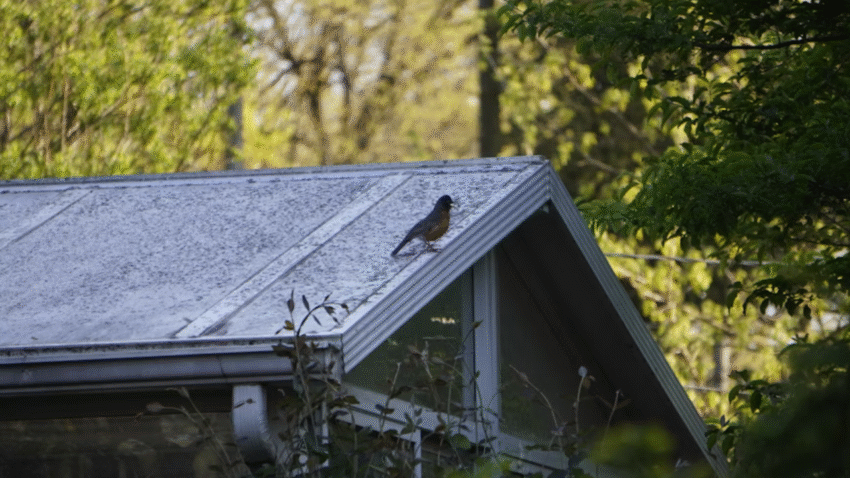Introduction
A leaking shed roof can quickly damage tools, equipment, and anything else stored inside. Left unchecked, water can rot the wood, cause mold growth, and weaken the entire structure. The good news is that most leaks are easy to repair with the right materials and a little know‑how. In this guide, you’ll learn exactly how to fix a leaking shed roof step by step, so you can stop the water and protect your shed for years to come.
Why Fixing Roof Leaks Quickly Matters
Roof leaks are one of the most common shed problems. Even a small leak can lead to serious issues over time, including warped plywood, rusted fasteners, and structural rot. By repairing leaks promptly, you’ll extend the life of your shed, protect everything stored inside, and avoid costly roof replacements. A watertight shed roof is essential for durability, safety, and peace of mind.
Step‑by‑Step Guide to Fixing a Leaking Shed Roof
1. Identify the Source of the Leak
Leaks often appear far from where water actually enters. Look for:
- Water stains on the ceiling or walls
- Dripping during rain
- Warped shingles, loose nails, or damaged flashing
Inspect both the inside and outside of the shed roof to pinpoint the problem area.
2. Gather Tools and Materials
You’ll need: ladder, gloves, hammer or screwdriver, roofing nails or screws, utility knife, pry bar, roofing cement, replacement shingles or panels, sealant, and safety gear.
3. Remove Damaged Shingles or Panels
Carefully lift or pry off any cracked, curling, or missing shingles. For metal or plastic panels, unscrew the damaged section and set it aside.
4. Check the Roof Sheathing
Inspect the plywood or OSB underneath for signs of rot or water damage. If it’s soft or discolored, replace the affected section before reinstalling roofing materials.
5. Install Replacement Shingles or Panels
- For Asphalt Shingles: Slide the new shingle under the existing row and nail it in place. Cover nail heads with roofing cement.
- For Metal or Plastic Panels: Install the new panel, overlapping edges properly, and secure it with roofing screws.
6. Seal Around Nails and Edges
Apply roofing cement or sealant to all exposed nails, seams, and edges to prevent future leaks.
7. Inspect Flashing and Ridge Caps
Leaks often occur around flashing or ridge caps. Replace any bent or damaged flashing and reseal with roofing cement.
8. Test the Repair
After the roof is fixed, use a garden hose to run water over the repaired area and check for leaks inside.
9. Add Preventive Measures
Trim back overhanging branches, clean gutters, and check fasteners yearly to prevent new leaks.
Common Mistakes to Avoid
❌ Ignoring the Root Cause
Simply patching over leaks without replacing damaged materials is a short‑term fix.
✅ Solution: Always inspect sheathing, flashing, and fasteners before repairing.
❌ Using the Wrong Materials
Household caulk or glue won’t hold up on a roof.
✅ Solution: Use roofing cement, proper sealant, and galvanized roofing nails or screws.
❌ Overlapping Shingles or Panels Incorrectly
Improper overlap can cause new leaks.
✅ Solution: Follow manufacturer instructions for correct placement and overlap.
❌ Delaying Repairs
Small leaks quickly grow into major problems.
✅ Solution: Repair leaks as soon as you spot them to prevent expensive damage.
❌ Working Without Safety Gear
Climbing on a roof can be dangerous.
✅ Solution: Wear gloves, use a sturdy ladder, and never work on a wet or icy roof.
Extra Shed Tips & Hacks
- Apply a roof coating or sealant every few years to extend roof life.
- Keep gutters and downspouts clear to prevent water pooling near the shed.
- Replace missing or loose fasteners annually to avoid future leaks.
- For long‑term solutions, check out our guide on how to install a shed roof step by step.
Conclusion
Fixing a leaking shed roof is straightforward when you know the proper steps. By identifying the source of the leak, replacing damaged materials, and sealing all gaps, you’ll protect your shed from water damage and extend its lifespan. Take action as soon as you notice a leak—small repairs now can save you big money later.
